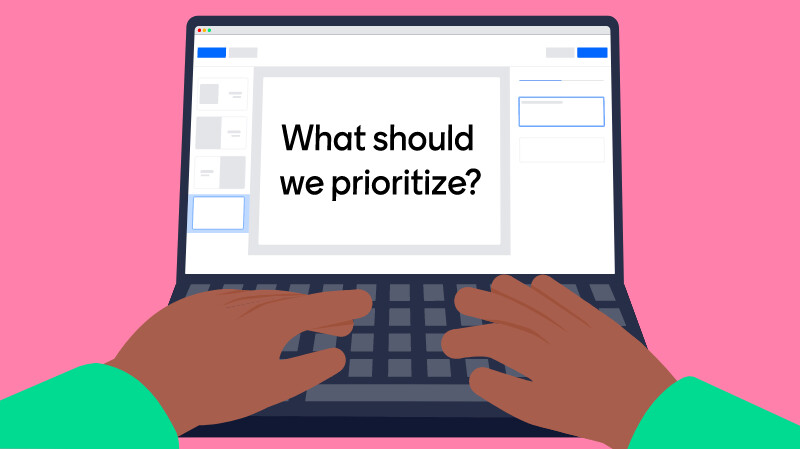Effective communication and well-planned project management are crucial, regardless of your project's size. You might have heard about Scrum, an agile project management framework, which is popular among managers and teams today. But what exactly is Scrum, and how does it work? Let's find out!
What does Scrum stand for?
The term 'Scrum' has its roots in rugby. In a rugby scrum, the team aligns in a specific formation to advance the ball. In a business context, Scrum aims to move the product forward and reach the finish line!
The three pillars of Scrum:
Scrum is an empirical process, relying on observation and experimentation instead of detailed planning. It stands on three pillars:
Transparency - In the Scrum process transparency means that everyone involved can see how things are done and agree on what 'done' means for each sprint/step of the project.
Inspection - We must regularly check the process to catch any major problems. However, we must be careful not to over-inspect, as it can disrupt the process. Finding the balance here is what makes great project management.
Adaptation - In Scrum, adaptation occurs when the Scrum Core Team and Stakeholders gain insights from transparency and inspection, leading them to make enhancements in their work.
Scrum meetings and best practices
Scrum divides the project into "Sprints" with smaller goals to track progress. There are four common meetings:
1. Sprint Planning
A sprint planning meeting is crucial for the team to understand the various sprints and their goals before starting. The project owner presents the backlog items that need completion, and together, they estimate what can be achieved within a specific time frame. Typically, sprint planning meetings include:
- Discussion of sprint scope
- Plans for delivering the work
It's essential for the entire team to participate in the planning and flag any potential blockers or issues they foresee. One simple way to ensure this is by using a tool like Mentimeter during these meetings. A Mentimeter presentation not only provides a clear overview of the input but also invites everyone to contribute (anonymously) and adds an element of enjoyment to the process.
Examples of questions to ask in a Sprint Planning using Mentimeter:
- What are the top priorities for this sprint?
- What is the sprint goal?
- What tasks or user stories will be included in this sprint?
- Are there any potential obstacles or dependencies we should be aware of?
You can ask these questions using Mentimeter features such as Interactive Live Polling, Word Cloud or Survey Maker . These tools not only offer immediate feedback from the team but also present the data in a clear and straightforward visual format.

2. Daily Standup
A daily standup (or ‘daily scrum meeting’) is often carried out in 10-15 minutes, and is an ideal way to quickly collect valuable input, updates and feedback from the team. These meetings are typically held at an agreed-upon time every day and are hosted by the scrum master/project manager.
Since a standup is supposed to be quick and efficient, it's often challenging for the scrum master to ensure that everyone gets the chance to speak before the time is up (we all know how fast 15 minutes can pass!). With Mentimeter you can make sure to gather everyone's input in a speedy, fun and interactive manner. You might not have the time in the meeting to go through all the input and questions raised but then at least you will have it all in one place and can review it at a later stage.
Examples of questions to ask in a Daily Standup using Mentimeter:
- What tasks are in the pipeline today?
- Is the workload bearable?
- What is hindering the flow?
To kick off a standup meeting effectively, consider starting with a quick check-in using Word Cloud or an icebreaker like a Quiz. Once the team is engaged and alert, you can transition to addressing more substantial matters and questions using Polls, Q&A’s and Surveys.
3. Sprint Review
The Sprint review is a meeting held at the end of each sprint, led by the team, where they showcase their completed work. It's sometimes called a 'sprint demo.' The entire Scrum team and stakeholders attend. The purpose isn't just to provide updates but to demonstrate the project's value. Feedback on user stories is gathered, and if accepted, it's added to the product backlog for the next sprint planning.
Hosting a review session with stakeholders can be daunting. Not everyone feels comfortable with having a group of people giving feedback, input, and posing questions about your work. However, it's necessary and an integral part of the Scrum process.
With Mentimeter, you can make this session less stressful. For instance, using our Q&A feature, stakeholders can post their questions and thoughts in the question box. You can then choose to discuss the topics that make the most sense at that stage.
Read more about hosting a successful Q&A session here or watch this video:
4. Sprint Retrospective
Done and dusted, but not quite. At the end of a significant sprint, it is crucial to have a sprint retrospective and summarize how it all went. In this meeting, the whole team, including the Scrum master/project manager and even the product owner (if there is one), attends. Continuous improvement is an essential part of the Scrum framework, and asking the team the following questions is key:
- What went well - what should we keep doing?
- What went wrong - what should we stop doing?
- What could be improved - what should we start doing or do differently next time?
During the meeting, the team evaluates the previous sprint concerning individuals, interactions, processes, tools, and their Definition of Done.
Mentimeter offers a range of Sprint Retrospective templates that you could use or gather inspiration from to tweak depending on what you want to ask your team. Make sure to gather as much input as possible and encourage the team to be open and honest. The retrospective is the best way to identify areas for improvement that you can implement in your next project!




